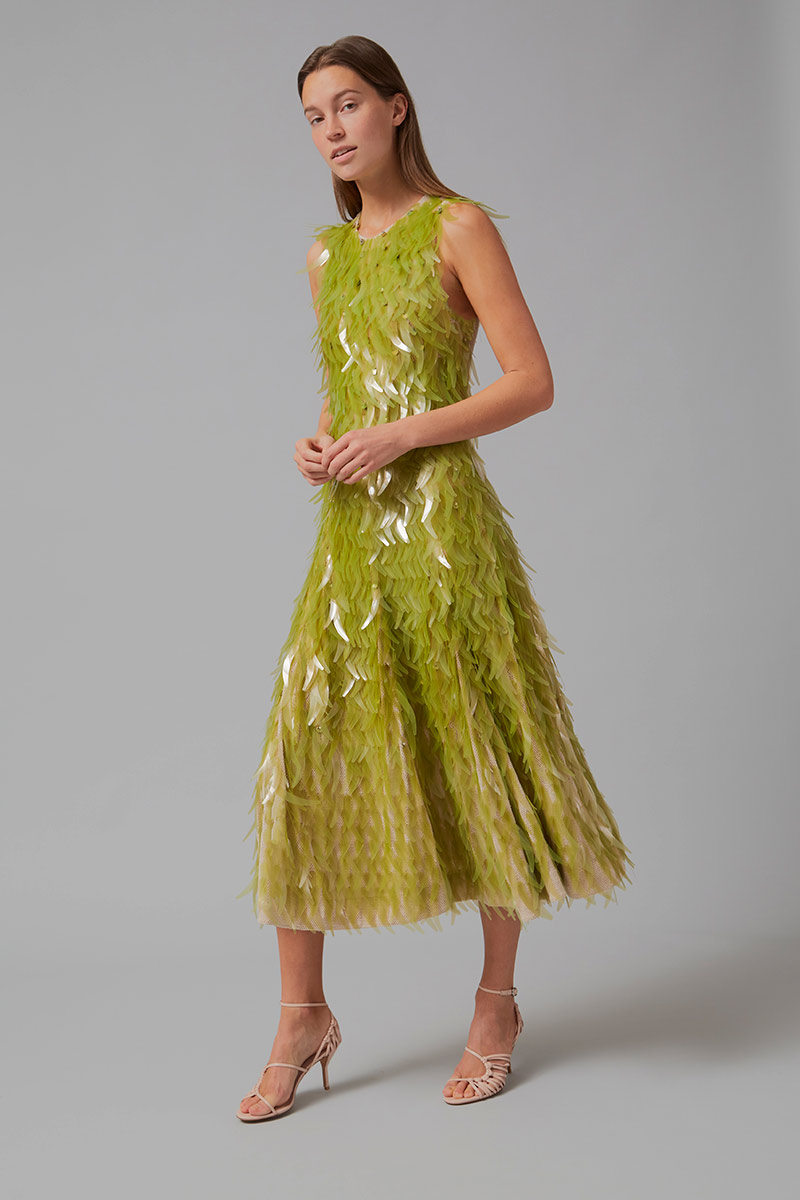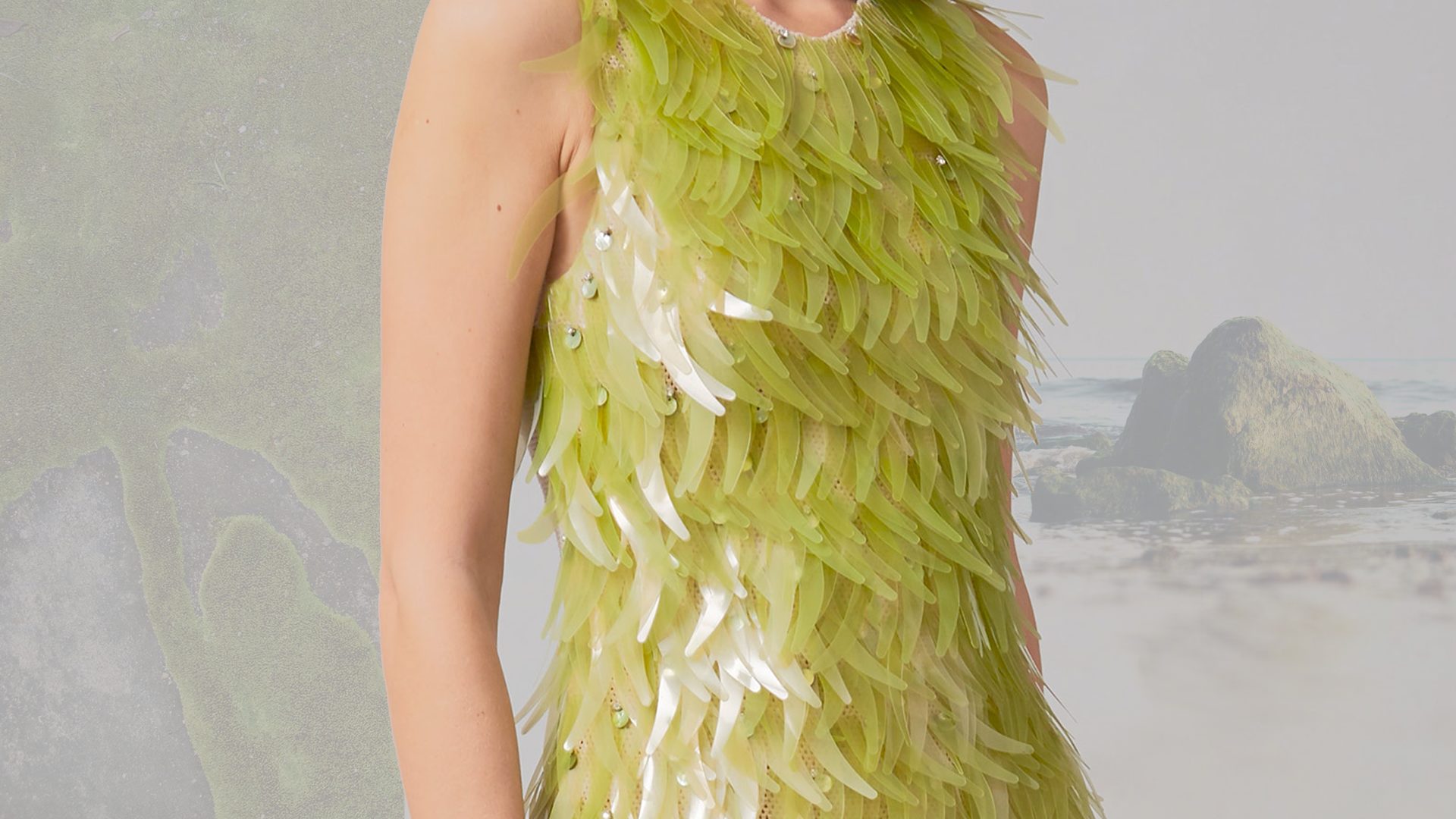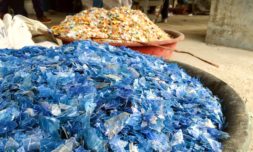Believe it or not, the sequins on this dress are made from 100% bioplastic and could provide some insight into the future of high-end fashion materials.
Now you might be thinking, what is bioplastic? In this case, bioplastic might be the answer to one of fashion’s most prevalent plastic waste sins… sequins.
In a wider context, instead of relying on petroleum based fossil fuels as its key component (like traditional plastic), bioplastic is created from renewable materials. For example, the sequins that make up this dazzling dress are made from algae.
Like all trees and plants, algae sequesters carbon from the atmosphere. Creating bioplastic from this carbon reservoir results in a product that is carbon neutral. Heat is used to bind the algae together to form the bioplastic. This is then poured into moulds which become sheets. Once cooled the sheets of bioplastic are finally cut into sequins.

Designer Phillip Lim is a member of One X One, an initiative that combines style and science to develop sustainable fashion. Collaborating with researcher Charlotte McCurdy, the duo created this seagreen petroleum-free dress, which represents the deconstruction and reconstruction of marine ecosystems.
The dress’ colour comes from dyes derived from organic material. McCurdy was inspired by traditional methods of producing oil paints, pre industrial-revolution.
The sequins are attached to a fishing-net like mesh created from a seaweed and bamboo fibre called SeaCell, created by natural textile suppliers PYRATEX. Finally the frock is adorned with mother of pearl, resulting in a stunning statement of sustainable fashion, as eco-friendly as it is striking.




















